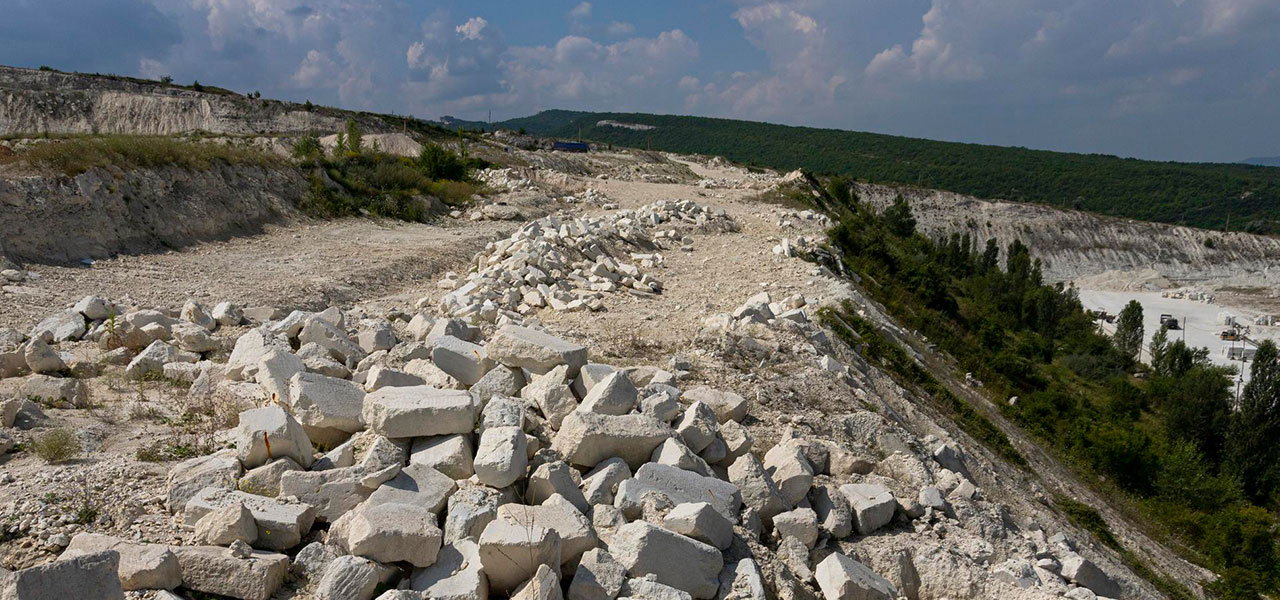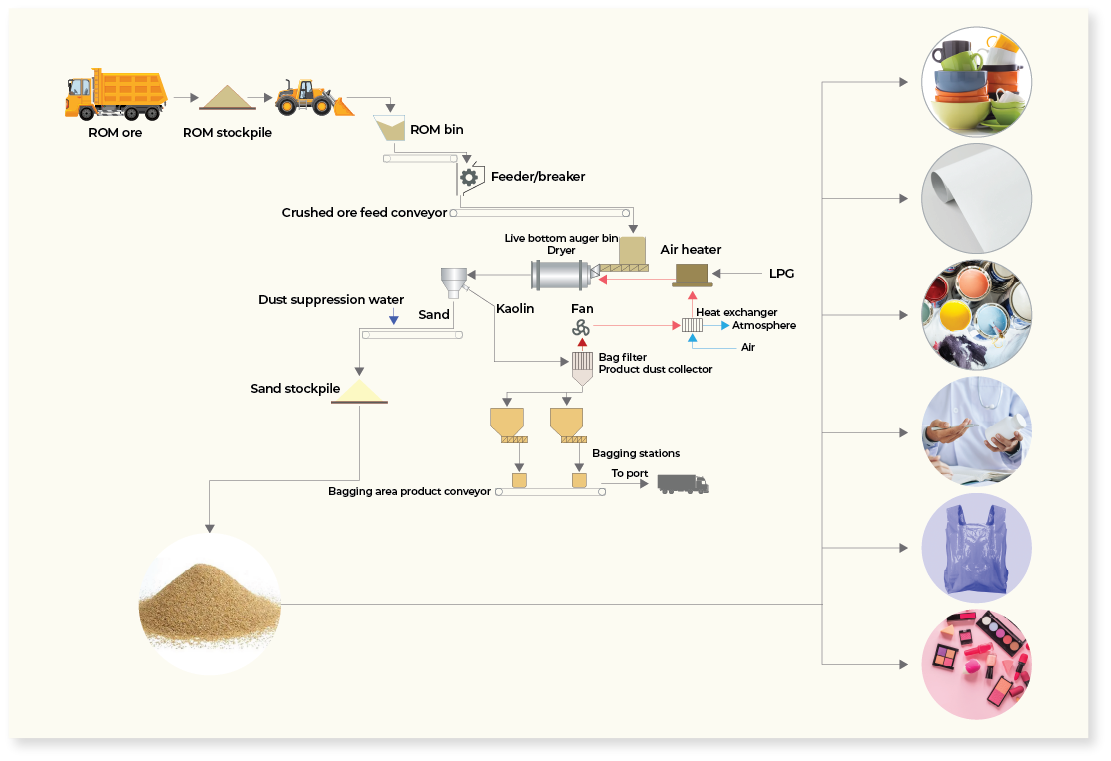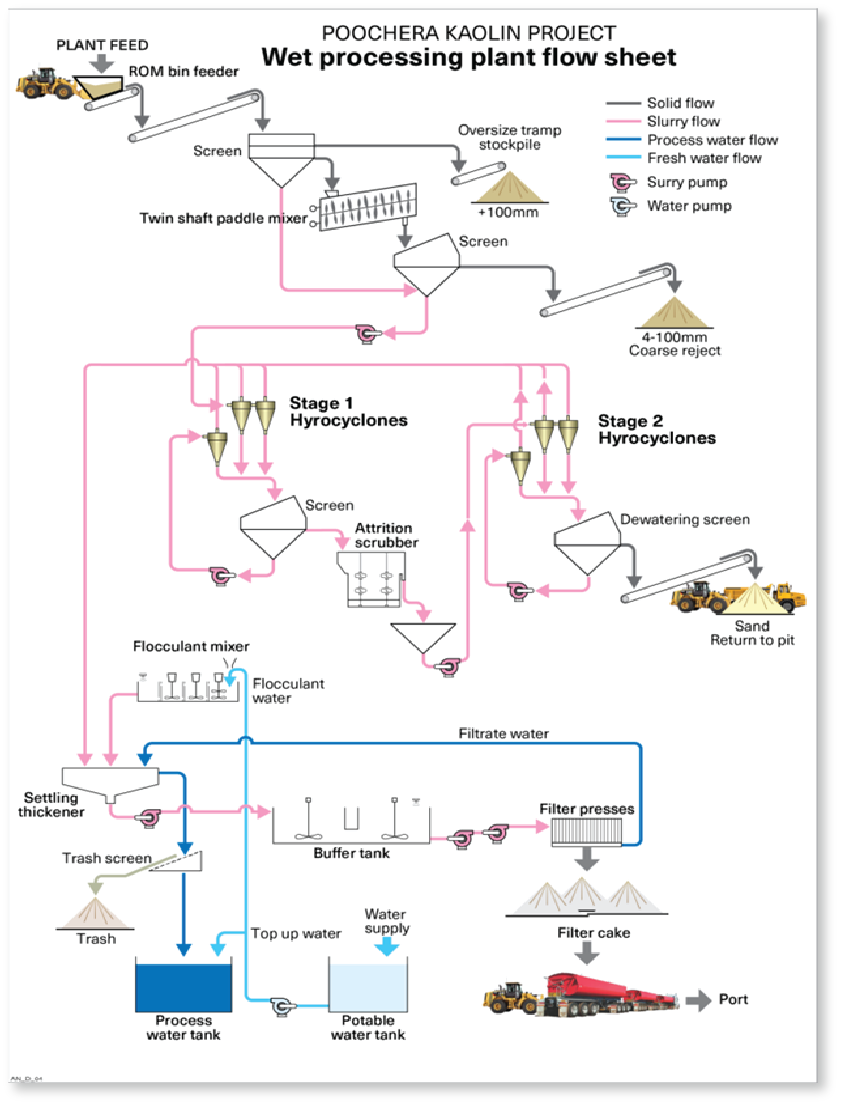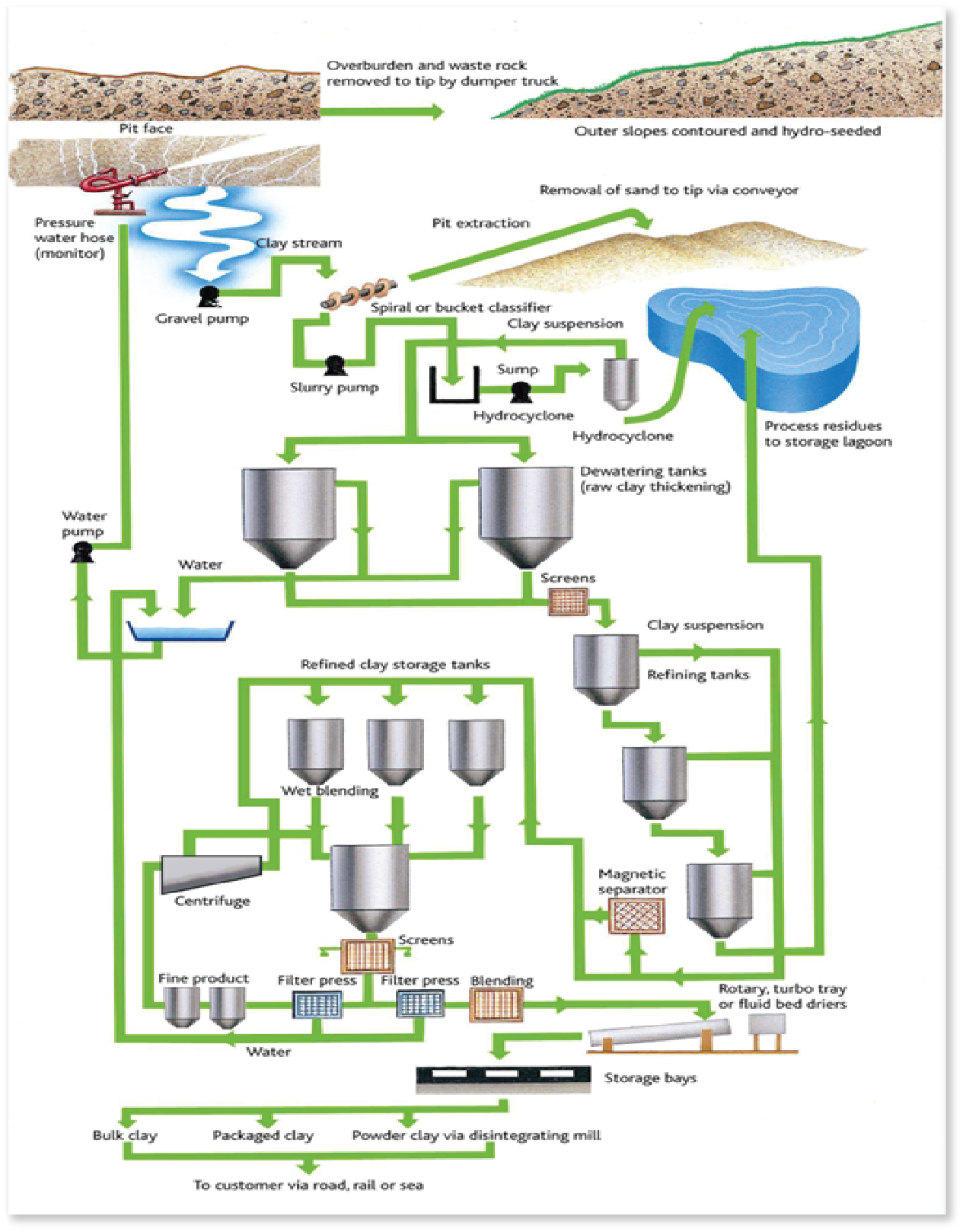Kaoline Processing.
Kaolin, also known as China clay, is a white clay mineral that is commonly used in the paper, ceramics, and paint industries. The processing of kaolin involves several steps, including mining, drying, pulverizing, and refining.
Kaolin is mined using open-pit mining methods, which involve removing overburden, such as soil and rock, to access the kaolin deposit. After mining, the kaolin is transported to a drying facility where it is dried to a moisture content of about 6-8%. This helps to improve the handling and processing of the kaolin. The dried kaolin is then pulverized into a fine powder using a variety of equipment, including crushers, mills, and blenders. This process helps to break down the kaolin into smaller particles and to remove impurities.
The pulverized kaolin is then further refined through a variety of processes, including magnetic separation, froth flotation, and bleaching. These processes help to remove impurities such as iron, titanium, and other minerals that can affect the quality and performance of the kaolin. The refined kaolin is then processed into a variety of products, depending on the intended use. For example, kaolin can be used in the paper industry as a filler and coating pigment, in the ceramics industry as a raw material for porcelain and other ceramics, and in the paint industry as a pigment and filler.
Kaolin processing is an important industry, with significant demand from various industries around the world. However, the mining and processing of kaolin can have environmental impacts, including habitat destruction, soil erosion, and water pollution. The industry has made efforts to minimize its environmental footprint through the use of sustainable mining practices and resource management, but continued attention to environmental issues is necessary to ensure the long-term sustainability of the industry.
Kaolin processing and its applications:
Paper industry: Kaolin is a major component in the manufacture of paper, particularly coated paper, where it is used as a filler and coating pigment. The fine particle size and high brightness of kaolin make it an ideal material for producing high-quality paper products.
Ceramics industry: Kaolin is used as a raw material for the production of a wide range of ceramic products, including porcelain, fine China, and ceramic tiles. It is valued for its high whiteness and plasticity, which make it easy to shape and mold into a variety of forms
Paint industry: Kaolin is used as a pigment and filler in the production of paints, coatings, and other surface treatments. It is valued for its high opacity, which helps to provide good coverage and hiding power in paints and coatings.
Rubber industry: Kaolin is used as a filler and reinforcing agent in the production of rubber products, such as tires, hoses, and belts. It helps to improve the mechanical properties and durability of rubber products, as well as their resistance to heat and chemicals.






